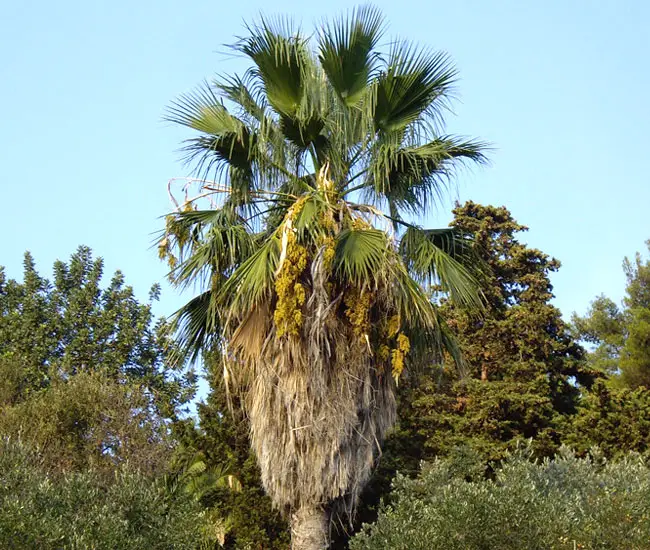
The Mexican Fan Palm Tree, scientifically known as Washingtonia robusta, is a highly popular choice for both indoor and outdoor settings due to its striking appearance and impressive cold-hardiness, making it an ideal addition to landscapes within USDA zones 8a-11.
Native to northwestern Mexico, this palm has found a second home in various regions, becoming a beloved feature in gardens and urban landscapes.
This palm is characterized by its remarkable cold hardiness, drought resistance, and affordability, making it a low-maintenance option. Washingtonia robusta can thrive in states such as Alabama, Arizona, Arkansas, California, Georgia, Louisiana, Mississippi, Nevada, Oregon, and Texas.
Quick Facts:
| Scientific name: | Washingtonia robusta |
| Common names: | Mexican Fan Palm, Washington Palm, Skyduster. |
| Origin: | Native to desert regions of Mexico. |
| Growth Rate: | Moderate to Fast. Up to 70 – 100 ft tall and 5-10ft wide, but usually is not taller than 40ft. |
| Cold Tolerance: | USDA Zones 8a (10 to 15 F) to 11 (above 40 F). |
| Light Req: | Full sun. |
| Water Req: | Low |
| Soil Req: | Widely adaptable |
| Fruit: | Yes. Brownish black. |
| Propagation: | By seed, germinating in 1-2 months. |
Identifying Characteristics of the Mexican Fan Palm
It features a single gray trunk embellished with old leaf bases, approximately 13 inches in diameter. To maintain its attractive appearance, some maintenance is required.
Regular trimming of old leaves is essential to prevent the trunk from becoming sheathed in dead leaves, creating a brown, shaggy covering known as a “hula skirt” that extends nearly to the ground.
The trunk is straight, slightly swollen at the base, lacks a crownshaft, and is crowned with 20-25 large fronds.
The leaves are glossy green, palmate or fan-shaped, measuring about 5 feet in length and 4 feet in width. They boast lance-shaped leaflets with elegant drooping tips that lend a tropical ambiance to the landscape.
Mature palms have petioles armed with short, sharp thorns, necessitating caution during trimming.
Flowers and Fruits of the Mexican Fan Palm
In late spring, the Mexican Fan Palm produces small creamy flowers that grow in clusters on branched inflorescences, extending 8-10 feet beyond the leaves.
These flowers are followed by black berry-like drupes, approximately 1/2 inch in diameter. While the fruits are edible, they have thin flesh and a sweet date-like taste, suitable for drying or making into jelly.
Caring for the Mexican Fan Palm
Washingtonia robusta is a fast-growing palm, capable of reaching heights of 70-100 feet and widths of 5-10 feet, although it typically does not exceed 40 feet in height.
This cold-hardy palm can tolerate temperatures as low as 10°F, but temperatures lower than 23°F may damage the leaves. It thrives in USDA Zones 8a (with temperatures between 10 to 15°F) to 11 (above 40°F). While the Mexican Fan Palm prefers full sun, it can tolerate some shade when young.
Drought tolerance is another notable feature, although it experiences faster growth with ample water. It thrives in moist, well-drained soil and requires minimal maintenance, typically requiring annual pruning.
To prevent nutritional deficiencies, it’s advisable to apply high-quality palm fertilizer with a continuous-release formula twice a year during the growing season.
Propagation is typically achieved through seeds, with the best time for sowing being in the spring. Germination takes approximately 4 weeks, and seedlings can exhibit four little leaves in just six months.
Mexican Fan Palm Pictures
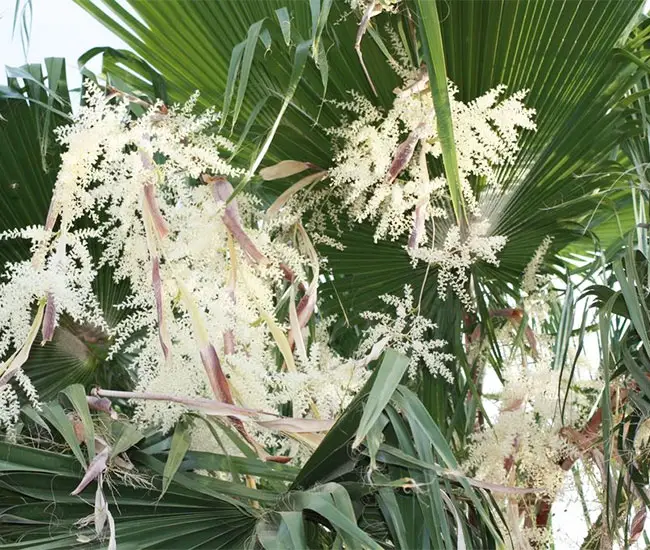
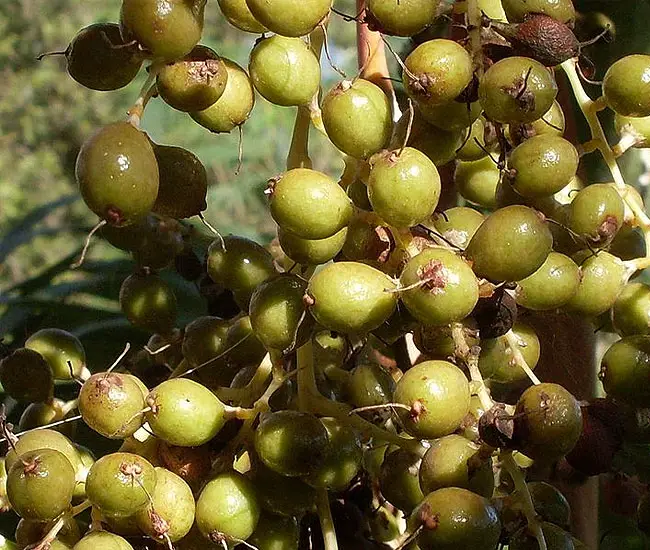
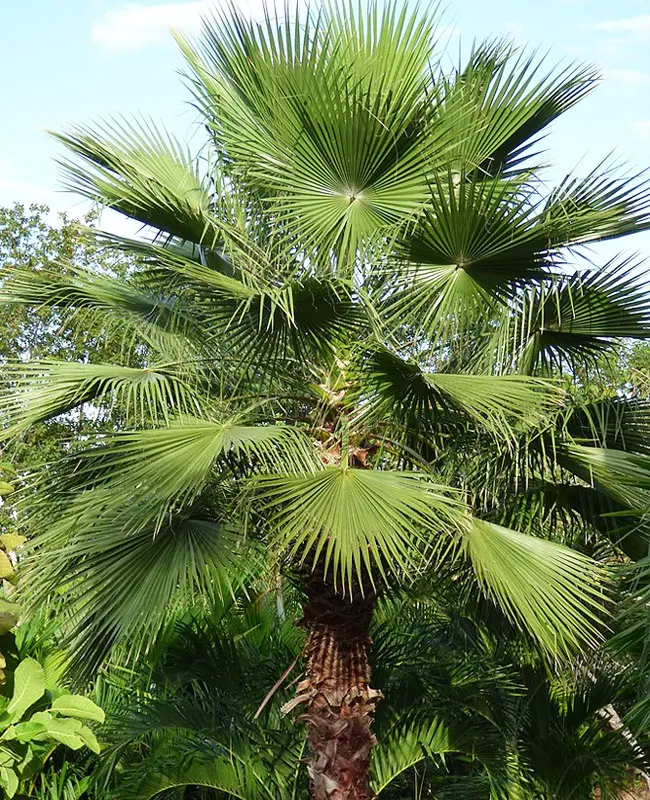
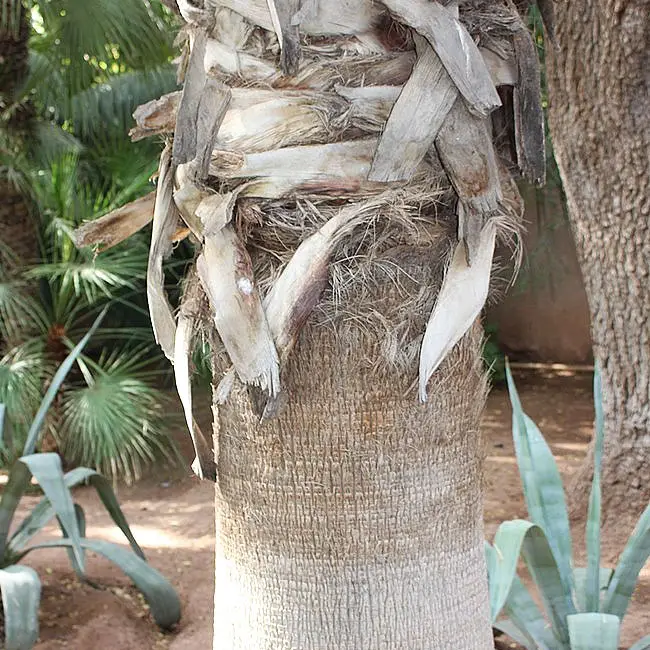
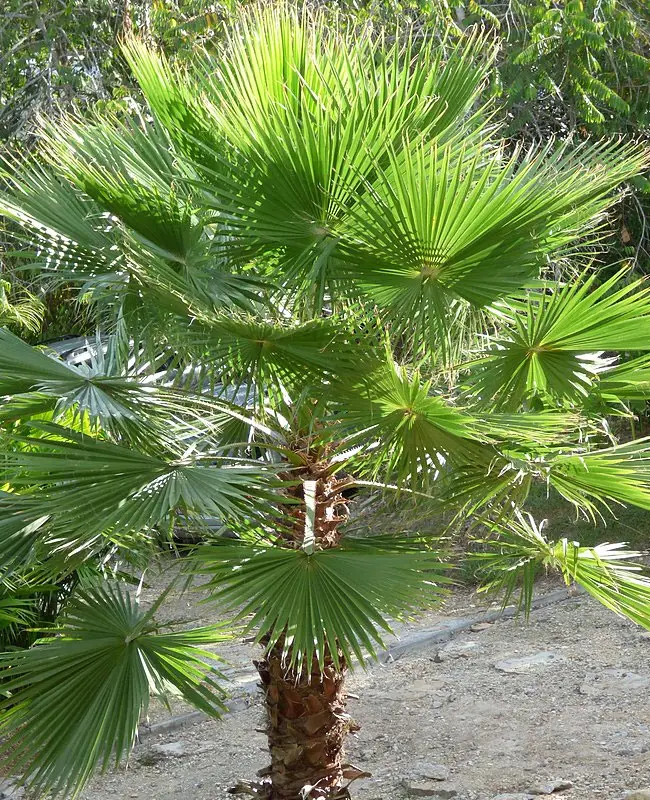
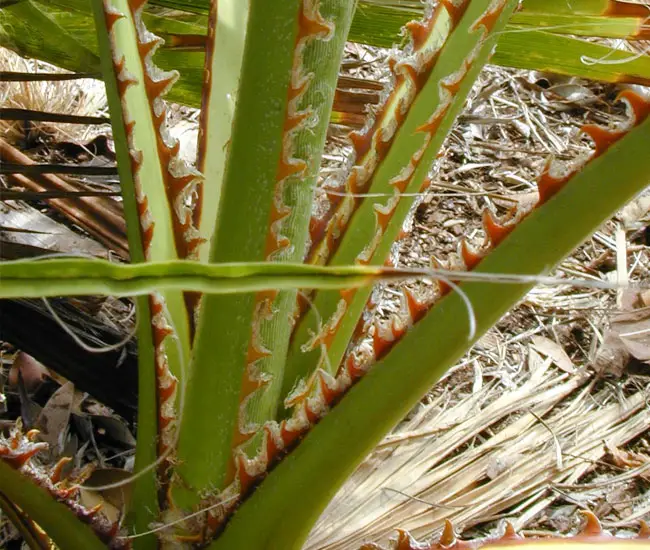

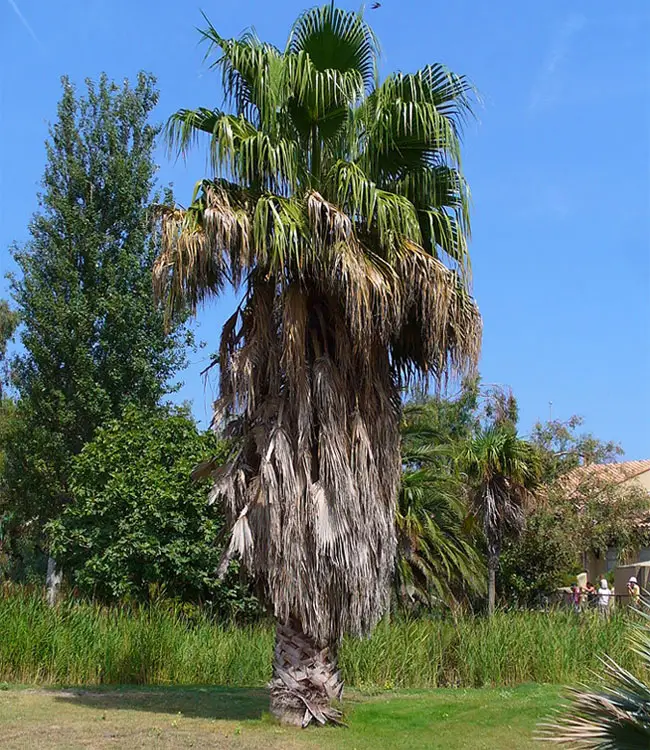
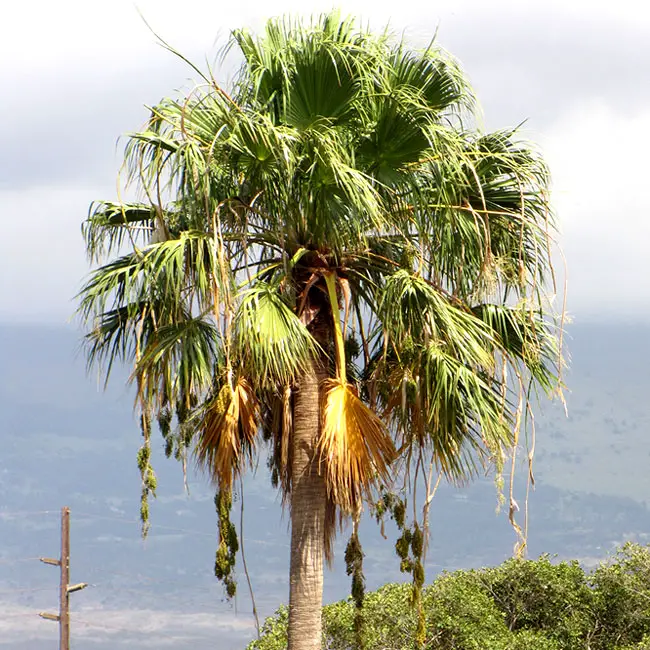
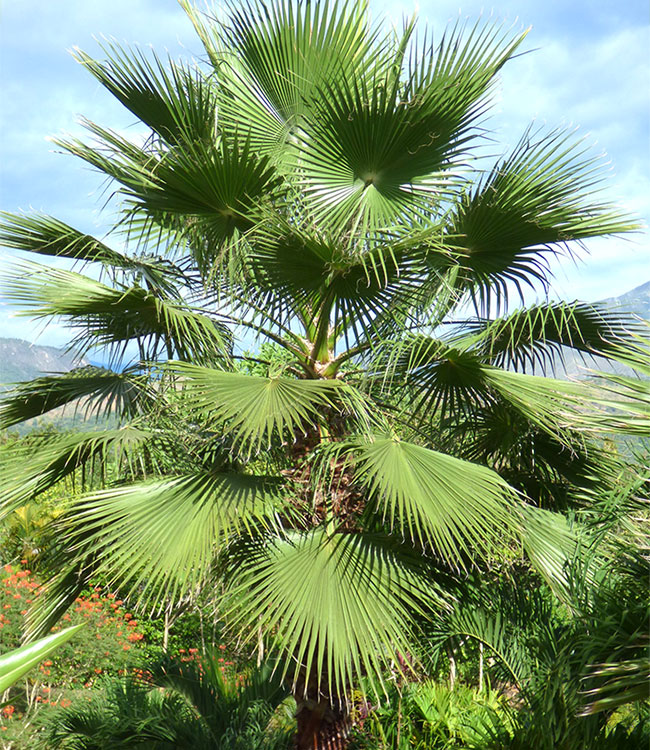
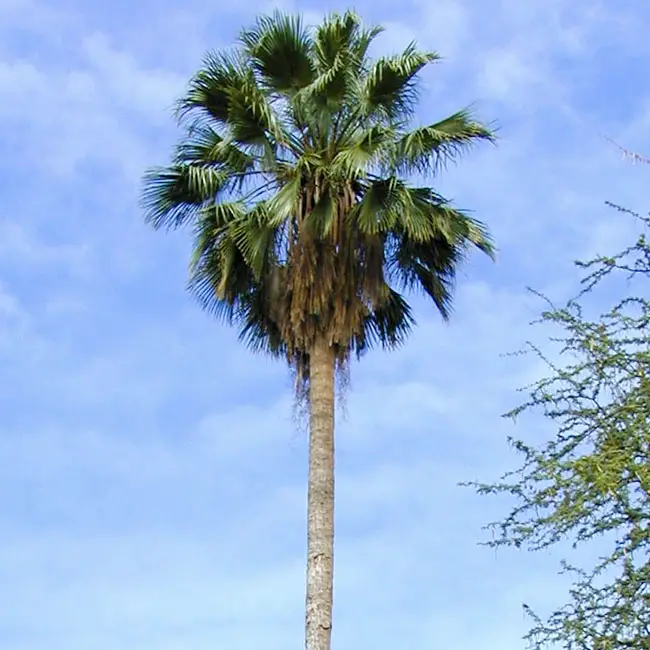
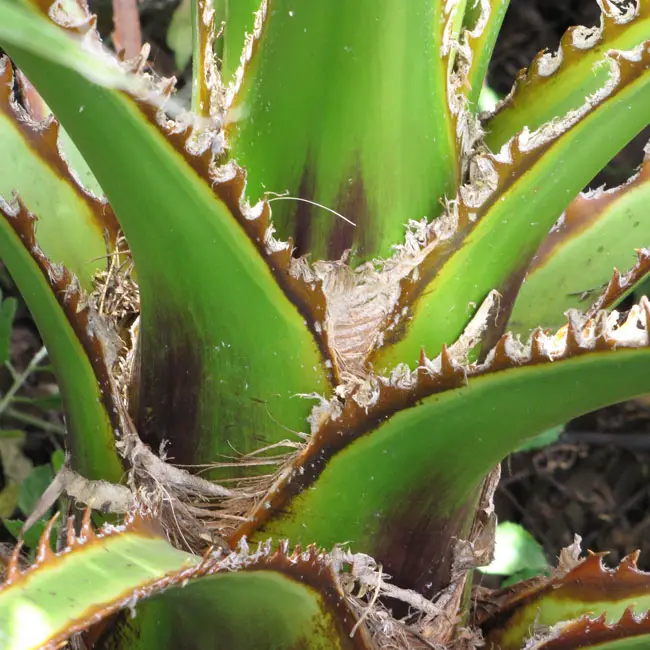
More information can be found on EDIS and Floridata sites.

I should have bought a palm that was a 7 hardiness and I didnt. I bought the Mexican Fan Palm tree. Please help me help my tree. I bought the seedlings and put the in the yard in direct sunlight.
Is this palm safe for cats and dogs
Hello, thank you for all the great palm information on this site. I caught my neighbor right as he finished chain sawing the top off a gorgeous Mexican Palm (6ft tall) in his yard. I stopped him and asked if I could save the tree.
The tree has no leaves but lost less then two inches at the top of the trunk.
He let me dig up and take what was left of the tree, From what I can tell it has a nice root ball and roots. I’ve read your advice on replanting but does this poor stump have a chance? I could send you a photo if you would like to see it.
THANK YOU
Palm Lover in Los Angeles
wanted to know about winter temps as the pot said 40 f. 15-25 degrees in this article. Thanks
WE hv this fan tree and it is getting too tall in our front yard of our mobile home… If we was to cut it down to a lower level.. What would the tree do? Continue growing from center or outside? It is a healthy tree.
Friends of ours has America no grew so high could not trim n eats a very messy tree.
We have two Mexican palms. This past winter we had hard freezes and snow one time. This is Houston. The trees are fine and it is mid may.